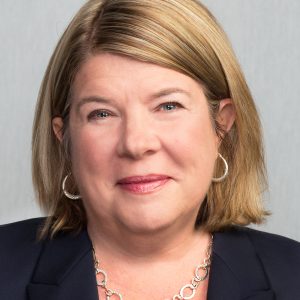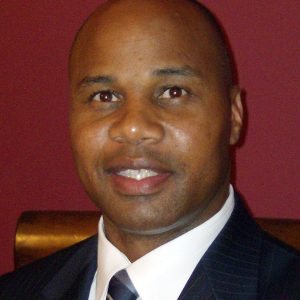Writer: Eleana Teran
 3 min read December 2023 — From launching the Juncture, an Innovation Hub, to embarking on the construction of a new VA clinic, the Town of Chapel Hill and the Town of Garner have demonstrated their commitment to innovation, community engagement, education, and cultural enhancement.
3 min read December 2023 — From launching the Juncture, an Innovation Hub, to embarking on the construction of a new VA clinic, the Town of Chapel Hill and the Town of Garner have demonstrated their commitment to innovation, community engagement, education, and cultural enhancement.
Under the leadership of Pam Hemminger and Rodney Dickerson, their respective mayor and town manager. In interviews with Invest:, Mayor Pam Hemminger and City Manager Rodney Dickerson offered insights into how the towns’ are shaping their futures.
Hemminger highlighted Chapel Hill’s pursuit of growth and community strengthening, maintaining a keen focus on balancing the tax base and fostering local job opportunities. Meanwhile, Dickerson emphasized Garner’s journey in enhancing healthcare and preserving the town’s character, all while managing growth and fiscal responsibility.
What are some of the unique strengths and advantages that the town offers to businesses?
 Pam Hemminger: We are thrilled to announce the soft opening of our Innovation Hub, called The Junction. It’s a remarkable collaboration between the university, the town, the Downtown Partnership, and the county to establish a centralized ecosystem that fosters connections between investors, entrepreneurs, and startups.
Pam Hemminger: We are thrilled to announce the soft opening of our Innovation Hub, called The Junction. It’s a remarkable collaboration between the university, the town, the Downtown Partnership, and the county to establish a centralized ecosystem that fosters connections between investors, entrepreneurs, and startups.
This initiative aligns perfectly with our comprehensive strategy to bring together creativity and entrepreneurship in Chapel Hill. We recognized the need for a space that could unite these various entities and support their ventures with a diverse and talented workforce both on and off-campus. While we may not attract giant corporations like Apple, our focus lies in nurturing and retaining startup companies that have the potential to change the world.
Commercial development has also been a major emphasis during my tenure, aiming to balance our tax base while creating local job opportunities. Although Chapel Hill is smaller compared to neighboring cities like Raleigh and Durham, we are steadfast in our commitment to growing and strengthening our community.
 Rodney Dickerson: One of the major developments is the start of construction on the VA clinic. This facility is significant for the region as it provides a centralized location for outpatient services in eastern North Carolina, reducing the need for patients to travel to Durham.
Rodney Dickerson: One of the major developments is the start of construction on the VA clinic. This facility is significant for the region as it provides a centralized location for outpatient services in eastern North Carolina, reducing the need for patients to travel to Durham.
Our strategic plan, which we review annually with the Council, is key to maintaining the town’s values and character. It encompasses factors related to growth and fiscal responsibility. Our daily actions are guided by this strategic plan, which helps us balance growth with the essence of our town.
What steps is your office taking to enhance the town’s appeal as a greater place to live, work, and play?
Hemminger: We have implemented incentive programs to attract companies offering high-paying jobs and innovative technologies to our community. These programs have been successful in bringing in new businesses and investments. Through grants, we have supported the development of commercial spaces, particularly in our Downtown area. We have also focused on empowering minority businesses, especially during the challenging times of the pandemic, partnering with the Chamber of Commerce to provide the necessary assistance.
Our commitment to creating complete communities has been a top priority as we aim to offer a well-connected and accessible environment, allowing people to commute by foot, bike or transit, reducing the reliance on cars. Our Downtown and various regions, like Southern Village and North Chapel Hill, are being connected to facilitate smooth transitions.
Moreover, as a midsized town, we have sought and obtained federal grants like the RAISE Grant to fund essential projects, such as the “Everywhere to Everywhere Greenways” strategy and improved transit networks. This is a tremendous achievement because midsized towns like ours simply do not have enough resources to even apply for these grants. As such, to pay back to the community, we will continue with our emphasis on affordable housing, particularly workforce, and middle housing, which has been a result of collaboration with businesses and addressing their needs.
Dickerson: We’ve conducted pay studies to ensure our wages are competitive with neighboring towns. Additionally, we’ve improved benefits, such as adding extra holidays and allowing more time off for employees. Flexibility has also been key, especially post-COVID, as we’ve allowed employees to work from home when their roles permit and we’ve maintained this flexibility where it’s beneficial.
Through economic development efforts, we collaborate with high schools to introduce students to various professions in Garner, emphasizing both trades and college pathways, since not every student is college-bound. We run programs like police academies to expose the public to public safety careers. We also work with the Chamber on events like the Connect conference, which showcases upcoming opportunities in Garner.
Garner’s proximity to Raleigh is a significant advantage, allowing residents to enjoy the city’s amenities like professional sports, museums, and proximity to universities, including those in Durham. This close connection to a larger city, while maintaining our own community’s charm and character, makes Garner an ideal location.
What is your outlook for the town in the next two to three years and your top priorities in that time frame?
Hemminger: Implementing complete communities remains our No. 1 goal. Economic development progress is ongoing but we need to take bolder steps forward, especially with parking concerns. Our climate action plan is a significant focus and we’ll need to make real progress to address environmental challenges.
Additionally, social justice is crucial, and art plays a meaningful and impactful role in this endeavor. With the launch of the Uproar Fest, where we dedicated a whole month to art projects, 60 art installations were selected and installed throughout the Downtown area. Each artist was paid for their contribution and we even had three prizes to give, with one category being the people’s choice. This initiative has brought people back to the Downtown, creating a diverse collection of art from local and nearby artists. The project has fostered a sense of community, with people from different backgrounds coming together to appreciate the art. The Uproar Fest exemplifies how we strive to bring people together and create a welcoming and inclusive community as we believe it shouldn’t take a tragedy to bring people together but something positive that unites diverse perspectives, building a better and more connected community. Partnerships with the university, particularly in the art realm, play a significant role in achieving this goal, blurring the lines between campus and town.
Dickerson: I’m optimistic about Garner’s future. Our focus is on maintaining fiscal health and managing balanced growth. As Wake County expands, we’re seeing some long-time residents express concern about the pace of growth. However, given our affluent area and available land, growth is inevitable. Our challenge is to preserve the town’s character while accommodating various housing options and job opportunities.
Recently, we were thrilled to announce that WakeMed will establish a behavioral health hospital and a separate acute care hospital on the same campus in Garner, positioning us to become a medical hub in the region. This is significant, especially with the construction of the VA clinic, and we’re very excited about the prospects.
For more information visit:
